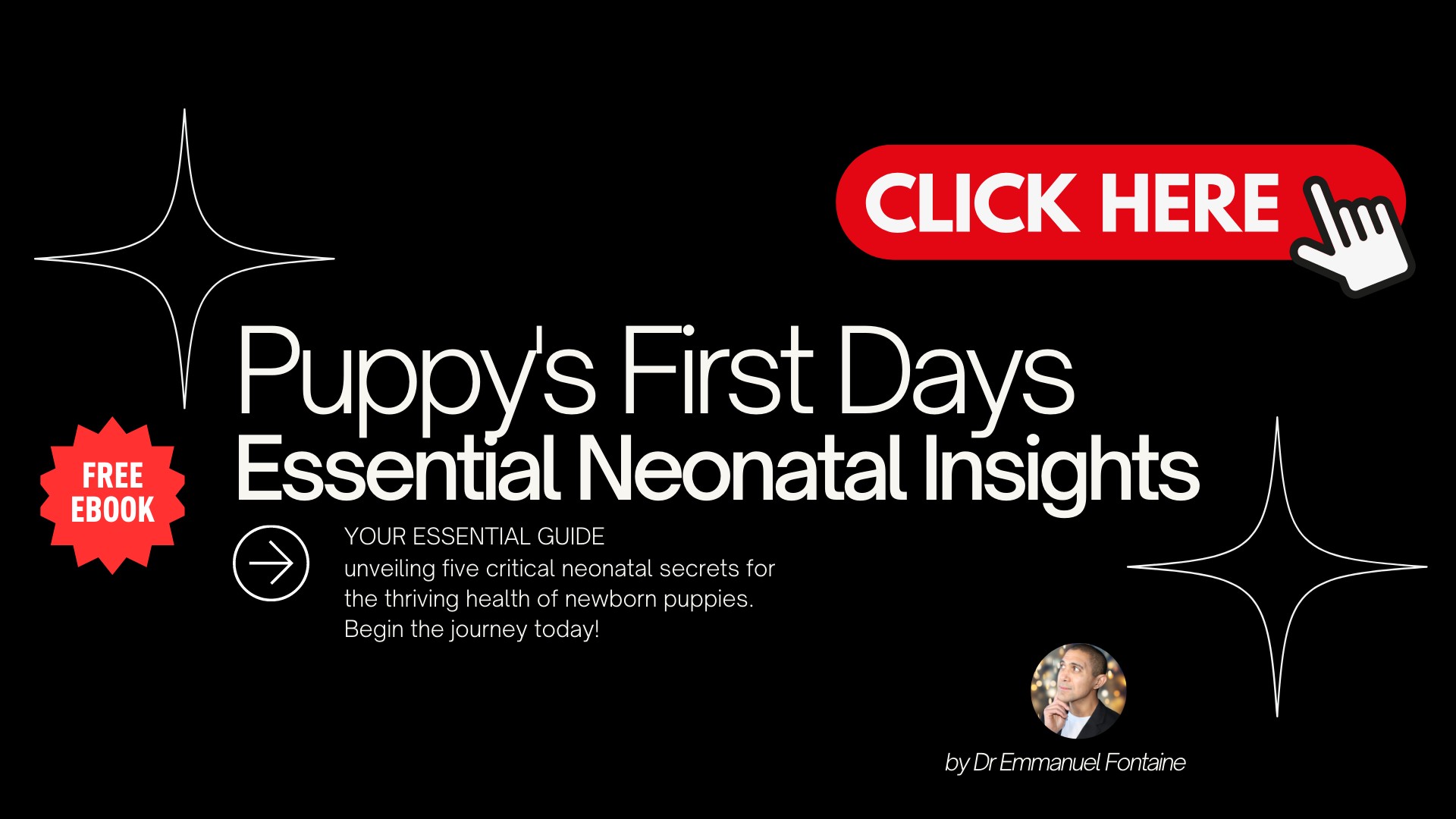Caring for newborn puppies is a rewarding experience, whether you’re a seasoned breeder or a first-time pet parent. A common question that arises is: Can You Pet Newborn Puppies? It’s a natural instinct to want to cuddle and interact with these tiny, adorable creatures. However, understanding the delicate nature of newborn puppies and the best practices for handling them is crucial for their health and well-being.
This article will delve into the importance of proper handling of newborn puppies, exploring the benefits and potential risks. We will discuss how to interact with them safely, ensuring you contribute positively to their development while protecting them from harm.
The Significance of Proper Handling for Newborn Puppies
Handling newborn puppies correctly is more than just being gentle; it’s about contributing to their healthy development, both behaviorally and physically. Improper handling, on the other hand, can have negative consequences, potentially leading to stress, illness, or even maternal rejection.
Why Handling Newborn Puppies Matters
Contrary to older beliefs that newborn puppies should be left undisturbed, gentle and regular handling from birth actually has significant benefits for their behavioral development. Early handling, even in the first few days of life, can be a game-changer for a puppy’s future temperament.
Brief, daily handling sessions, as short as 30 seconds to a minute, can introduce a mild, beneficial stressor. For instance, momentarily placing a puppy on a cool vinyl floor creates a slight temperature change. This mild stress is believed to enhance their resilience and adaptability as they grow, making them better equipped to handle new situations and environments later in life. This concept is related to early neurological stimulation (ENS), which has been shown to have positive effects on puppy development.
Furthermore, regular handling allows for early detection of potential health issues. Daily checks while handling provide opportunities to observe puppies closely for any signs of distress or illness. Early detection is crucial for prompt veterinary intervention and can significantly improve outcomes. There are several key health indicators to monitor daily in newborns, including their weight, temperature, hydration, and activity levels.
The Misconception of Mother Rejection and Handling
A common concern regarding handling newborn puppies is the fear of causing mother rejection. The myth that a mother dog will reject her puppies if they smell like humans is partially true but often misunderstood. While it’s important to be mindful of scents, the primary cause of maternal rejection is usually not human scent, but often hypothermia in the puppies.
If a puppy is cold, weak, or ill, the mother dog might instinctively reject it as a survival mechanism for the rest of the litter. Therefore, ensuring puppies are warm and healthy is paramount in preventing maternal rejection.
However, to minimize any risk associated with scent, especially in the initial days, it’s advisable to take certain precautions when handling newborn puppies. Avoid excessive handling and consider using gloves, particularly in the first few days after birth. Washing your hands thoroughly before handling is also crucial to maintain hygiene and prevent introducing bacteria to the vulnerable newborns.
| Handling Best Practices | Precautions to Take |
|---|---|
| Support their body gently, always holding their head and bottom. | Avoid jerky movements and limit handling duration to short sessions (around 5 minutes). |
| Gradually introduce them to new, gentle stimuli like soft sounds and textures. | Protect them from loud noises and overly stimulating environments. Expose them to a variety of gentle household sounds to aid neurological development. |
| Observe their behavior closely for any signs of distress or illness during handling. | Handle with utmost care and consult a veterinarian immediately if you notice any concerning symptoms or abnormal behavior. |





| 👉🏽 Maintaining the correct environmental temperature is vital for newborn puppies. Options range from a heating lamp for consistent warmth (like this model), to a heating pad with adjustable settings for localized heat (such as this one), or even a pediatric incubator, offering precise control over temperature and humidity (similar to this incubator). Select the heating method that best suits your setup to ensure your puppies stay warm and healthy. |
|---|
The Benefit of Gloves When Handling Newborn Puppies
Using gloves when handling newborn puppies is a recommended practice for maintaining hygiene and minimizing the risk of introducing infections. Gloves act as a barrier, preventing the transfer of bacteria or viruses from your hands to the puppies, who have underdeveloped immune systems.
Furthermore, gloves can help reduce the transfer of human scents, although this is a secondary benefit compared to hygiene. While the risk of mother rejection due to human scent is often overstated, using gloves can provide an extra layer of precaution, especially for anxious mothers or in kennel environments where hygiene is paramount.
Essential Safety Measures When Interacting with Newborn Puppies
Ensuring the safety and health of newborn puppies requires implementing strict safety precautions during any interaction. These measures protect the puppies from potential harm and contribute to a healthy start in life.
Isolation from Other Pets and Limiting Human Interaction
Newborn puppies should ideally be kept separate from other household pets, at least until they are sufficiently vaccinated and their immune systems are more robust. Introducing them to other pets too early can expose them to diseases and infections that their young bodies are not yet equipped to fight. The maternity area should be a sanctuary, free from potential pathogens carried by older animals.
Similarly, limiting the number of people interacting with the newborn litter is advisable. Restricting access to one or two primary caregivers minimizes the risk of introducing germs and keeps the environment calm and stress-free for the mother and puppies. While it’s tempting to show off the adorable newborns to everyone, their health and well-being should be prioritized.
Comprehensive Newborn Puppy Care
Beyond handling, newborn puppy care involves several critical aspects: proper feeding, maintaining a clean environment, and vigilant health monitoring. A warm, clean, and comfortable environment is non-negotiable. Regularly cleaning the whelping box and providing fresh bedding are essential for hygiene.
Regular health checks are also vital. Monitoring weight gain, observing their activity levels, and checking for any signs of illness are crucial for early intervention if problems arise. Establishing a routine for daily monitoring helps ensure any deviations from normal health are quickly identified.
For a detailed guide on newborn puppy monitoring, refer to this resource:
Newborn Puppy Care: The A-to-Z of Nurturing New Beginnings
Key Safety Precautions Summarized
When interacting with newborn puppies, remember these essential safety measures:
- Always wash your hands thoroughly with soap and water before handling puppies.
- Limit handling sessions to short durations (around 5 minutes daily) to avoid overstimulation and stress.
- Wear gloves to maintain hygiene and minimize scent transfer, particularly in the early days.
Understanding Mother Dog Behavior
The mother dog’s behavior is a critical factor in newborn puppy safety. Closely observe the mother’s interactions with her puppies and be particularly attentive to first-time mothers (primiparous females). Inexperience can sometimes lead to accidental injury of the puppies.
Furthermore, some mothers can exhibit protective aggression towards anyone approaching their litter. Respect the mother dog’s space and observe her behavior for signs of stress or agitation. Avoid any interactions that could make her feel threatened or anxious. A stressed mother can, in extreme cases, neglect or even harm her puppies.
Creating a calm and stress-free environment for the mother is paramount. Recent research highlights the benefits of using pheromone diffusers in the maternity area. Studies suggest that pheromone diffusers, started a week before whelping and continued for the first three weeks of the puppies’ lives, can significantly improve maternal behavior and reduce stress. This is a valuable tool to consider for creating a harmonious environment for both mother and pups.
| 👉🏽Pheromone diffusers are a highly recommended tool for stress reduction in breeding dogs, with studies indicating they can improve maternal care in females. This pheromone diffuser is the one I typically advise using for dogs. |
|---|
The Vulnerable Immune Systems of Newborn Puppies
It’s crucial to recognize the extreme vulnerability of newborn puppies to illness. Their immune systems are still developing, making them highly susceptible to infections. However, the most immediate threats to newborn puppy health are often related to what’s known as the “3-H syndrome”: Hypothermia, Hypoglycemia, and Dehydration.
These three conditions – low body temperature, low blood sugar, and fluid loss – can rapidly become life-threatening in newborns. Preventing the 3-H syndrome is a primary focus in newborn puppy care.
| 👉🏽 A vital tool for preventing the 3H syndrome (hypoxia, hypothermia, hypoglycemia) in puppies is a high-quality puppy milk replacer, ensuring they receive proper nutrition and energy. This milk replacer is my recommendation. It’s also available through professional programs in the USA and Canada. Check these links for program details. |
|---|
Maintaining a clean and hygienic environment is of utmost importance to minimize the risk of infection. Regularly clean and disinfect all surfaces, bedding, and equipment in the whelping area. Good hygiene practices are fundamental to protecting these vulnerable newborns.
| Key Needs for Puppies Under 3 Weeks Old | Specific Details |
|---|---|
| Maintaining Warmth | Ensure a consistently warm and draft-free environment. |
| Illness Monitoring | Vigilantly watch for any signs of illness, such as lethargy, decreased appetite, or changes in stool consistency. |
| Gentle Handling | Handle puppies with extreme gentleness to prevent injury and stress. |
The delicate physiology of newborn puppies demands careful and informed care. Any sign of illness in a newborn puppy should be considered an emergency, requiring immediate attention and veterinary consultation. Early intervention is often the key to successful treatment and survival.
In conclusion, petting newborn puppies is not only permissible but can be beneficial when done correctly and with mindful precautions. Proper handling, combined with a focus on hygiene, safety, and maternal well-being, sets the foundation for healthy, well-adjusted puppies. Remember, caring for these fragile beings is a responsibility that requires attentiveness, patience, and a commitment to providing the best possible start to their lives.
Neonatal mortality is a significant challenge in dog breeding.
It can be a deeply frustrating and emotionally draining experience for breeders and pet owners alike.
The good news is that neonatal mortality is not insurmountable.
Our understanding of newborn puppy health has advanced significantly in recent years. New research has provided valuable insights into optimizing their care and improving their chances of survival and thriving.
By investing in knowledge and adopting best practices, you can make a real difference in the health and well-being of newborn puppies.